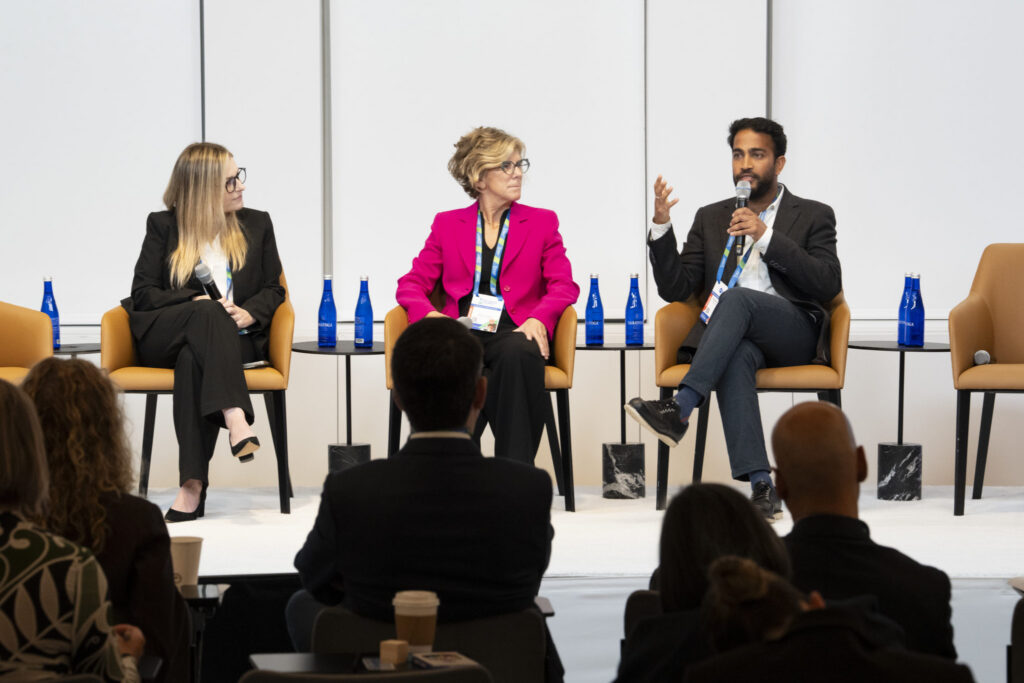Exploring a New Paradigm for Neuroscience
October 2, 2025

Dear Civic Science Community,
Last week, neuroscientist Narayan Sankaran spoke at the Science Summit during the UN General Assembly meetings in New York, discussing brain–computer interfaces that could help people with paralysis speak again. At the summit, he asked a question he’s explored as a Civic Science Fellow with the University of California, Berkeley’s Kavli Center for Ethics, Science, and the Public—a question with the power to reshape the practice of neuroscience: What happens when the scientists developing neurotechnology begin with listening to the communities they hope will use it?
In preparation for the panel, I invited Narayan to join me in conversation along with Caroline Montojo of the Dana Foundation, which organized the discussion at the Science Summit, and Brooke Smith of The Kavli Foundation, which joins the Rita Allen Foundation in supporting Narayan’s work. Together we are exploring the scope—and promise—of the work ahead for neuroscience to transform its relationship with communities of many kinds. We open this issue of the Civic Science Series with a few excerpts from the discussion.
Elizabeth Christopherson
President and Chief Executive Officer, Rita Allen Foundation
What insights come from looking at the civic science of neuroscience, from the local to the global?
Narayan Sankaran: As neuroscientists, we have an incredibly privileged position. We seek to understand the physical basis of the human mind. But there hasn’t been enough work on earning the public’s trust. If I’m a member of the public, why should I trust scientists working on such a delicate and profound set of problems? We need to build that trust and build bridges between science and society. Ideally, that link should be as direct as possible. Scientists themselves should be working amongst and in dialogue with the communities.
Even if individual scientists become more ethically aware, how do you change the institutional machinery?
Brooke Smith: A few things are happening that give me some optimism. First of all, this commitment to civic perspectives is increasingly more of interest to folks entering the scientific community. I’m hoping that the appetite that’s coming forward will drive some of that institutional change. There are some visionary leaders of our scientific institutions who have a choice to prioritize this or not, and increasingly, more are. I hope we’re beginning to tell a story that when you support rising stars like Narayan to become remarkable scientists, civic science is now part of what it means to be a scientist.
We’re having a social reckoning right now about if people are really connected to what’s going on in science, and have they really benefited from it? Now is the time to take that seriously. That calls for us doing more proactive work to make these connections, like Narayan’s describing. Hopefully we’re on the edge of some broader societal change where both communities and academic institutions want to build in more civic infrastructure to allow this to happen, because it’s the right thing to do.
What do we need in order to broaden that lens of renewal throughout academia and beyond it, to work together in new ways?
Caroline Montojo: The way that the social contract between science and society has been set up within our country, there wasn’t a lot of room for perspectives from communities on the social context in which science operates. We’re paving new pathways into new paradigms for research and how it’s done. This element of wayfinding and experimentation is so core to what we do. We can work together, learn as much as we can from how things have been done in the past, and envision the future and what we’d like to change.
One of the recognitions that we’ve had here at the Foundation is the importance of piloting and catalyzing work with a community of people. When it comes to brain-computer interfaces, for example, recognizing that individuals with these implants should have their voices integrated at every stage of development. Our Dana Center at UCLA and Charles Drew University focuses on the South Central LA community, looking at the impacts of not only noise pollution, but also music as resilience within that community. It’s a loop effect, being able to come back to where you started to make sure that science can benefit people. Community-partnered neuroscience can make science even deeper, even richer than it would have been if done in a silo.
We are noticing that in the next generation of scientists, there seems to be a greater appetite for considering the ethical and societal dimensions of work, and thinking about the lived experience that various communities bring. That has been very inspiring—a very hopeful perspective to bring in as we chart out this future.
Narayan Sankaran: Within the scientific community, we need to grow a social movement comprising a constellation of scientists working across many different disciplines, not just neuroscience. Even though the focus as an individual scientist is narrow, the collective consequence of our work will not be narrow. We ought to hold that perspective in the front of mind.
Narayan Sankaran is Assistant Professor of Neuroscience at the University of San Francisco and a Civic Science Fellow at UC Berkeley’s Kavli Center for Ethics, Science, and the Public. Caroline Montojo is President and Chief Executive Officer of the Dana Foundation. Brooke Smith is Director of Science and Society at The Kavli Foundation.
This letter is excerpted from the October 2025 Civic Science Series newsletter.